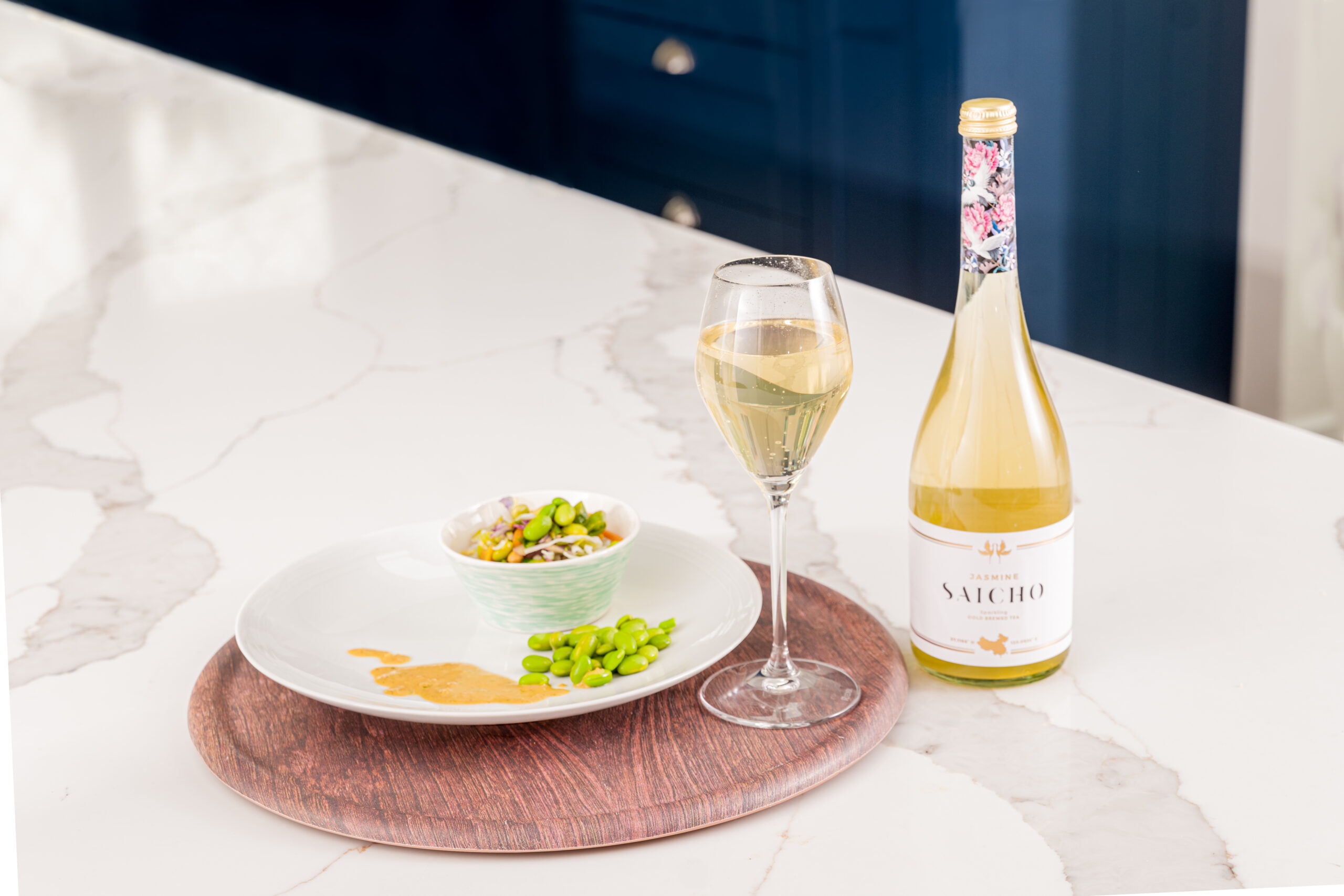
Saicho Sparkling Tea Review

If you’re like me and have been feeling like your lockdown recycling bin is looking more like the recycling bin at the back of the pub… then you’re ready for some non-acoholic alternatives. (Ok this is a slight exaggeration but it’s pretty close) Well we were lucky to be sent three bottles of Saicho sparkling cold-brewed tea.
The tea comes in three gorgeous flavours – Jasmine, Darjeeling and Hojicha. They are all designed to be served chilled in a Champagne flute or coupe. So on a Friday night, we got our fanciest Champagne flutes out and tried all three.
What is exactly Saicho tea? Well it’s cold-brewed for twenty-four hours to extract the most delicate and complex flavours from the tea leaves. Saicho teas are then finely balanced with a hint of sweetness and a dash of acidity. As a finishing touch, sparkling the tea enhances the flavour and creates an effervescent drink that can be enjoyed as a non-alcoholic alternative to Champagne or Prosecco. They were created by husband and wife team, Charlie and Natalie Winkworth-Smith, who had the desire to create a non-alcoholic drink that could pair well with food. Perfect for those who are allergic to alcohol or those who can’t or don’t want to drink alcohol.
Darjeeling Tea is grown in the foothills of the Himalayas in Darjeeling, India, at almost 2,000 metres above sea level. It is harvested in the summer to develop its unique flavour and has notes of wood spice, nectarine and muscatel with a subtle astringency. It pairs well with grilled meats and out of the three teas, this was my favourite, probably due to the fact that I am partial to a Darjeeling. I served this with a steak dish and it was quite easy to forget I wasn’t drinking wine with my meal.

Hojicha Tea originating in Kyoto in the 1920s as a way of utilising leftover leaves, stems, stalks and twigs. It is a roasted green tea grown in Shizuoka Prefecture and is now one of the most popular teas in Japan. The tea has notes of seaweed, roasted chestnuts and molasses. It airs well with Asian salads or cured meats. This was probably our least favourite of the three and while the other two flavours went down a treat, the seaweed taste while definitely not unpleasant was just a tad overpowering for us. That’s not to say we didn’t finish the bottle, just green tea is generally an acquired taste.
Jasmine Tea is a green tea scented with jasmine blossoms from Fuding, in China’s Fujian province. It has a rich creaminess and delicate floral aroma and is a light introduction to sparkling cold- brewed tea. A distillate of toasted oak adds notes of vanilla and spice. The tea leaves are harvested in early spring, dried and stored until the summer when the jasmine flowers are in bloom. The flowers are picked at midday when they are tightly closed against the sun and the tea is blended with new jasmine flowers over several nights until the aroma is perfectly balanced. The tea pairs well with creamy pasta or panna cotta. The Jasmine tea was refreshing and sweet which is definitely why it pairs so well with dessert. This was the one that tasted most like we were drinking it with a cocktail and we loved it.
Saicho’s retail price is £8.99 and is available to purchase at
Saicho 750ml retails at £10.99
200ml is sold in packs of 6 for £19.99 and is available to purchase at www.saichodrinks.com/shop
Written by Tegan LeBon




